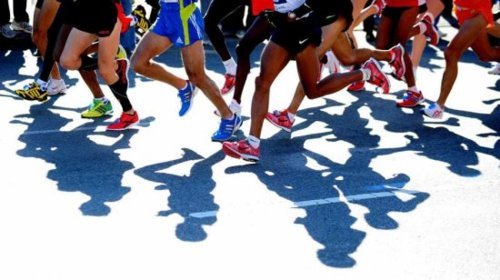The 2012 Boston Marathon is almost here! On April 16th, more than 20,000 runners will participate in the oldest annual city marathon in the world, occurring every year since 1887. The race, which attracts roughly 500,000 spectators, is one of the country’s most prestigious marathons due to its long history, challenging course, and competitive qualifying times. In order to be eligible to participate, 
Will you or someone you know be participating in the Boston Marathon this year? Here are a few things that you should know before race day:
The race’s course has essentially stayed the same throughout its history. The 42.195 km route stretches from Hopkinton to the center of Boston, and it is most famous for its difficulty level. Following the 25 km mark, the runners will hit the “Newton Hills,” which are notorious for derailing even the most seasoned athletes. The hills don’t reach exceptionally high elevations, but they are a difficult part of the race course because of their position after the 25 km mark, when runners’ glycogen stores are most likely to run out. So, how can you avoid “hitting the wall” during the big event? Here are some tips from InsideTracker’s expert scientists!
Before the marathon:
The glycogen stores in your liver and muscles depend on your carbohydrate intake leading up to the event. Your body converts glycogen to glucose (a type of sugar), which your muscles use as a primary source of fuel during exercise. This means that your ability to exercise is limited by the amount of glucose in your body. After about 90 minutes of exercise, your body’s supply of glycogen is completely depleted; this puts you at risk for “hitting the wall,” or feeling lethargic during your event. So, be sure to fuel your body with carbohydrates before the marathon to avoid this unpleasant experience!
During the marathon:
Proper hydration is important before, during, and after the race. Fluid regulates your body temperature, lubricates your joints, and transports nutrients throughout your body. Staying hydrated is particularly important during exercise because you lose water and electrolytes through sweat. The longer and more intensely you work out, the more necessary it becomes to get fluid into your body. When you don’t replenish your fluids, it becomes harder for your heart to circulate blood. A decrease in blood and plasma volume can contribute to muscle cramps, dizziness, fatigue, heat stroke, and heat exhaustion. You can adjust fluid intake to heat and humidity levels on race day, so if it’s humid on April 16th, be sure to drink a little more fluid than usual.
Check how much you normally sweat during long runs so that you can plan to drink enough replacement fluids during the race. One easy way to measure fluid loss is to weigh yourself before an hour-long run, then weigh yourself immediately after the run so that you can adjust fluid intake to your weight loss. For example, if you lost 1 pound (16 ounces) during a run, you should try to drink slightly less than 16 ounces during a run of the same length in similar weather conditions. Drinking too much fluid, especially plain water, can result in hyponatremia, a dangerous condition in which there is not enough sodium in your body fluids. To avoid hyponatremia, be careful to drink a little less fluid than the amount you lost in weight.
It’s important to drink water during the marathon, but it’s crucial to replace your electrolytes, too! Sodium, chloride, and potassium are major electrolytes, which are minerals in your blood, urine, and bodily fluids that contain an electrical charge. Your body’s cells use electrolytes to carry electrical impulses throughout your body and help you maintain a proper fluid balance. You lose electrolytes through sweat, so it’s also important to replace your electrolytes. Sports drinks are an easy way to help you stay hydrated and replenish your electrolytes during the marathon, but fruit juice and electrolyte-enhanced waters can also do the trick.
After the marathon:
When you exercise, the muscle fibers in your body start to break down. Damaged muscle cells release an enzyme called Creatine Kinase (CK) into the blood. The level of CK in your blood shows how much your muscles and skeletal system have been worked during exercise. Your CK levels will increase during marathon. To repair muscle damage, your body needs protein, which is made up of amino acids, the building blocks of your muscles. An adequate supply of protein will help your muscles recover from all the stress that’s placed on them while you’re running. Studies have shown that CK levels dropped faster when athletes went on bed rest for 23 hours after a marathon. While you may not have the luxury of a full day of bed rest, keep in mind that rest and proper nutrition are very important to your body’s recovery process. Runners also need to consume carbs to replace glycogen burned during the race.
Iron is also very important for post-marathon recovery. Athletes deplete iron faster than non-athletes because of exercise-induced iron losses through sweat, urine and feces. If iron levels aren’t properly restored after the marathon, muscle weakness and slower recovery time can sometimes result. Red meat and liver are famously associated with high levels of iron, but if you’re a vegetarian, other foods that are high in dietary iron include egg yolk, dried fruit, dark leafy greens, artichokes, and lentils. InsideTracker can help you find plant-based sources of iron by using the Food Menu tool.
Best of luck to all runners participating in the Boston Marathon from your friends at InsideTracker! Be sure to properly hydrate, eat right, and rest up to perform at your best!
